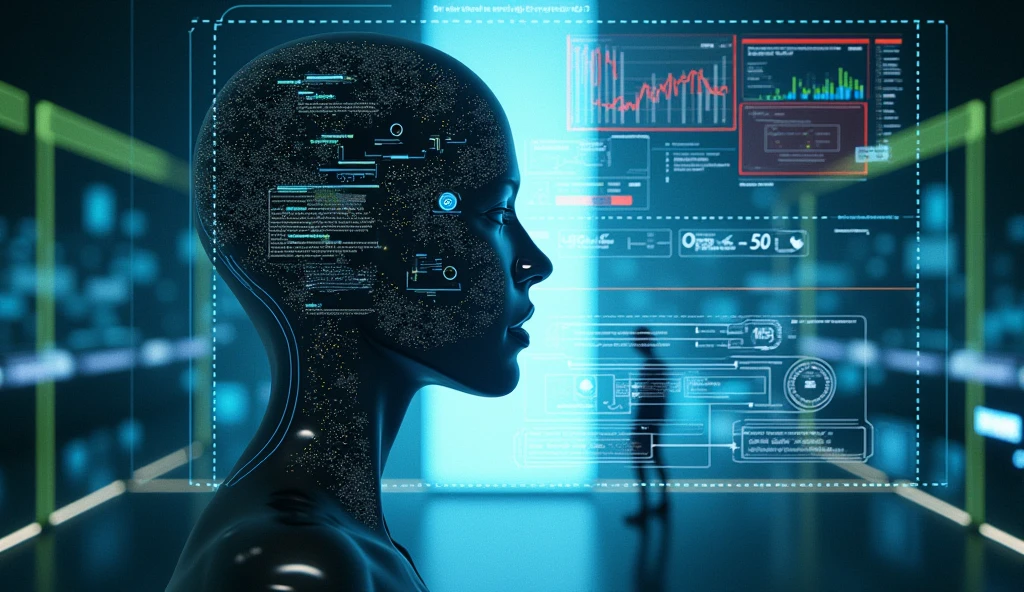What is Machine Learning?
Machine learning is a subset of artificial intelligence that focuses on the development of systems that can learn from and make predictions based on data. Unlike traditional programming, where explicit instructions are given to the computer, machine learning enables algorithms to identify patterns and derive insights from large sets of data. This capability has become increasingly significant in today’s digital landscape, where vast amounts of information are generated each day.
The core principle of machine learning revolves around the idea that systems can learn from their experiences. By utilizing various algorithms, these systems analyze historical data to recognize trends and make informed decisions without human intervention. This process allows for enhanced automation and improved prediction accuracy across numerous domains, such as finance, healthcare, and marketing.
There are several fundamental types of machine learning approaches. Supervised learning involves training a model using a labeled dataset, meaning that the input data is paired with the correct output. In contrast, unsupervised learning employs algorithms to identify hidden patterns or intrinsic structures in the input data without labels. Reinforcement learning is another pivotal method, wherein an agent learns to make decisions by receiving feedback through rewards or penalties based on its actions in an environment.
Machine learning’s role within the broader context of artificial intelligence is critical. By enabling machines to improve their performance independently over time, it paves the way for the development of intelligent applications that can augment human capabilities. As the demand for automation and data-driven decision-making continues to grow, understanding the fundamental concepts of machine learning will enable individuals and organizations to harness its potential effectively.

Key Applications of Machine Learning
Machine learning has revolutionized several industries by introducing innovative solutions to complex problems, thereby improving efficiency and effectiveness. In the healthcare sector, its applications include predictive analytics to predict disease outbreaks and personalized medicine that tailors treatment to individual patient profiles. By analyzing patterns in large data sets, healthcare professionals can make better-informed decisions, potentially leading to better patient outcomes and streamlined processes.
In the finance sector, the impact of machine learning is equally significant. Fraud detection systems employ advanced algorithms to identify unusual transaction patterns, enabling financial institutions to mitigate losses and enhance security. Additionally, machine learning models are utilized in algorithmic trading, where they analyze market trends and execute trades at optimal times, thus providing competitive advantages to investment firms.
The retail industry has also benefited considerably from machine learning techniques. Customer recommendation systems analyze consumer behavior and preferences, suggesting products that are likely to resonate with individual shoppers. This personalization not only enhances customer satisfaction but also boosts sales and loyalty. Moreover, machine learning aids inventory management by predicting demand patterns, ensuring that retailers maintain optimal stock levels and reduce both excess inventory and stockouts.
Transportation is yet another realm transformed by machine learning advancements. Self-driving cars utilize a multitude of algorithms and data from sensors and cameras to navigate safely and efficiently. This evolution promises to improve road safety and reduce traffic congestion. Furthermore, route optimization solutions powered by machine learning analyze real-time traffic conditions, facilitating better planning and resource allocation for logistics companies.
Overall, the applications of machine learning reach far beyond these examples, influencing myriad industries and enhancing everyday activities. As we continue to explore the capabilities of this technology, its potential to reshape our world becomes increasingly evident.
Challenges in Machine Learning
The advent of machine learning has revolutionized numerous sectors; however, it is not without its challenges. One significant hurdle lies in the quality of data, which is foundational to the efficacy of machine learning models. Inaccurate, incomplete, or biased data can lead to erroneous predictions, thereby undermining the reliability of machine learning applications. This highlights the crucial need for meticulous data cleansing and validation processes before deploying any model in a real-world scenario.
In addition to data quality, ethical considerations pose another major challenge. Machine learning technologies often operate based on historical data, which may inadvertently propagate existing biases present in that data. This could lead to unfair outcomes in critical applications, such as hiring processes or law enforcement. It is imperative for organizations to recognize these ethical implications and actively seek to mitigate bias through transparent methodologies and diverse datasets.
Another technical issue is overfitting, where a model performs exceptionally well on training data but fails to generalize effectively on unseen data. This phenomenon can erode the model’s performance in practical applications, necessitating careful model selection and hyperparameter tuning to achieve a balance between bias and variance.
Implementing machine learning within organizations also presents significant challenges, particularly in resource allocation and talent acquisition. Developing and deploying robust machine learning solutions often require specialized knowledge and skills, posing a barrier for many organizations. Furthermore, integrating machine learning into existing workflows necessitates adequate infrastructure and resources. These challenges underscore the need for strategic planning and investment to leverage machine learning effectively. Overall, addressing these challenges is crucial for the advancement and responsible implementation of machine learning technologies in various applications.

The Future of Machine Learning
The landscape of machine learning (ML) is poised for significant evolution over the coming years, driven by rapid advancements in technology and increasing demand for automation and data analysis. One of the most notable future trends is the continual refinement of deep learning. As neural networks become more sophisticated, they are expected to handle increasingly complex tasks with greater efficiency. This will likely lead to breakthroughs in various applications, such as computer vision and speech recognition, thereby enhancing user experiences across diverse industries.
Moreover, the integration of machine learning with other cutting-edge technologies like the Internet of Things (IoT) is expected to yield transformative results. By enabling devices to learn from and adapt to their environment, this convergence will facilitate smarter homes, automated industrial processes, and more responsive urban ecosystems. As IoT devices proliferate, the volume of data generated will present both opportunities and challenges for machine learning systems, necessitating innovative approaches to data processing and analysis.
Another critical trend on the horizon is the advancement of natural language processing (NLP). The ability of machines to understand and produce human language is anticipated to improve dramatically, leading to more intuitive and meaningful interactions between people and machines. Enhanced NLP will not only revolutionize customer service through chatbots but also enable more effective data summarization and sentiment analysis, enhancing decision-making processes.
While these technological advancements pave the way for a future rich with possibilities, it is crucial to address the societal implications of machine learning. Issues such as bias in AI algorithms, data privacy, and the ethical deployment of technology must be prioritized to ensure responsible AI development. As we move forward, striking a balance between innovation and ethics will be vital in realizing the full potential of machine learning while safeguarding societal values.
Conclusion
Machine learning (ML) is a powerful subset of artificial intelligence that has transformed industries through its ability to analyze vast amounts of data and make data-driven predictions.
From healthcare and finance to retail and transportation, ML’s applications are far-reaching, providing efficiency, accuracy, and automation. However, challenges such as data quality, ethical concerns, and resource demands must be addressed to ensure its responsible use.
As technology advances, particularly in deep learning, natural language processing, and IoT integration, the future of ML holds immense potential to revolutionize industries even further, though it will require careful ethical oversight to maximize benefits while minimizing risks.
FAQ: Machine Learning
What is it?
It is a subset of artificial intelligence that allows systems to learn from data, identify patterns, and make decisions with minimal human intervention.
How does it work?
It works by using algorithms to analyze large data sets, recognize trends, and adjust based on past results. It can be supervised, unsupervised, or involve reinforcement learning.
What are the main types?
The three main types are supervised learning (using labeled data), unsupervised learning (finding patterns in unlabeled data), and reinforcement learning (learning through rewards and penalties).
What are some common applications?
It is used in areas such as personalized recommendations (e.g. Netflix, Amazon), fraud detection, self-driving cars, health diagnostics, and predictive analytics.
What is the difference between it and artificial intelligence?
Machine learning is a branch of artificial intelligence focused on systems that learn from data. AI is a broader field that includes machine learning but also involves other techniques like rule-based systems and natural language processing.
What are the benefits?
It improves efficiency, automates repetitive tasks, provides accurate forecasts, enhances customer experiences, and drives innovation in industries such as healthcare, finance, and retail.
What are some challenges in implementation?
Key challenges include data quality, algorithm bias, lack of skilled talent, high computational costs, and ethical concerns such as privacy and fairness.
What is overfitting in machine learning?
Overfitting occurs when a model performs well on training data but fails to generalize to new, unseen data. It happens when the model learns noise instead of actual patterns.
How is it used in healthcare?
It is used for predictive analytics, disease detection, personalized treatment plans, medical image analysis, and improving diagnostics.
What does the future hold for this technology?
It includes advances in deep learning, integration with the Internet of Things (IoT), improved natural language processing (NLP), and broader adoption across industries, while addressing ethical and social concerns.
More about machine learning.



